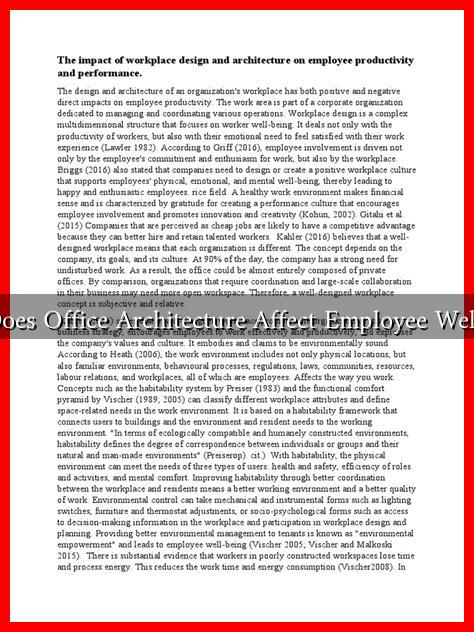-
Table of Contents
How Does Office Architecture Affect Employee Wellbeing?
In today’s fast-paced corporate world, the design and architecture of office spaces play a crucial role in shaping employee wellbeing. As organizations strive to enhance productivity and employee satisfaction, understanding the impact of office architecture becomes essential. This article explores how various architectural elements influence employee wellbeing, supported by case studies, statistics, and expert insights.
The Connection Between Office Design and Employee Wellbeing
Office architecture encompasses more than just aesthetics; it significantly affects employees’ mental and physical health. Research indicates that a well-designed workspace can lead to increased job satisfaction, reduced stress levels, and improved overall wellbeing. Here are some key aspects of office architecture that influence employee wellbeing:
- Natural Light: Access to natural light has been shown to enhance mood and energy levels. A study by the Harvard Business School found that employees with access to natural light reported a 51% drop in eyestrain, a 63% drop in headaches, and a 56% reduction in drowsiness.
- Open vs. Closed Spaces: Open office layouts can foster collaboration but may also lead to distractions. A study published in the Journal of Environmental Psychology found that employees in open offices reported higher stress levels compared to those in private offices.
- Biophilic Design: Incorporating natural elements, such as plants and water features, can significantly enhance employee wellbeing. Research from the University of Exeter found that employees working in environments with plants reported a 15% increase in wellbeing.
- Ergonomics: The physical setup of workstations can impact employee health. Poor ergonomics can lead to musculoskeletal disorders, which are among the leading causes of workplace absenteeism. Investing in ergonomic furniture can reduce these risks and improve comfort.
Case Studies: Successful Office Designs
Several companies have recognized the importance of office architecture in promoting employee wellbeing and have implemented innovative designs to support this goal. Here are a few notable examples:
- Google: Known for its creative office spaces, Google incorporates open areas, relaxation zones, and biophilic elements. Their offices feature natural light, greenery, and recreational facilities, contributing to high employee satisfaction and retention rates.
- Airbnb: The Airbnb headquarters in San Francisco is designed to reflect the company’s culture of belonging. The open layout encourages collaboration, while the use of natural materials and ample greenery promotes a sense of comfort and wellbeing.
- Steelcase: This office furniture manufacturer has designed its headquarters to prioritize employee wellbeing. The space includes adjustable workstations, collaborative areas, and quiet zones, allowing employees to choose their work environment based on their needs.
The Role of Technology in Office Architecture
Advancements in technology have also transformed office architecture, enabling smarter designs that cater to employee wellbeing. Smart building technologies can monitor air quality, lighting, and temperature, creating a more comfortable work environment. For instance:
- Air Quality Sensors: These devices can detect pollutants and adjust ventilation systems to ensure a healthy indoor environment.
- Smart Lighting: Automated lighting systems can mimic natural light patterns, helping to regulate circadian rhythms and improve focus.
- Mobile Apps: Some companies use apps to allow employees to customize their workspaces, from adjusting lighting to reserving collaborative spaces.
Conclusion: The Future of Office Architecture and Employee Wellbeing
As organizations continue to adapt to changing work environments, the importance of office architecture in promoting employee wellbeing cannot be overstated. By prioritizing elements such as natural light, ergonomic design, and biophilic features, companies can create spaces that enhance productivity and satisfaction. The integration of technology further supports these efforts, allowing for smarter, healthier work environments.
In summary, investing in thoughtful office architecture is not just a trend; it is a necessity for fostering a healthy, engaged workforce. As we move forward, organizations that recognize and act on this connection will likely see significant benefits in employee wellbeing and overall business success.

